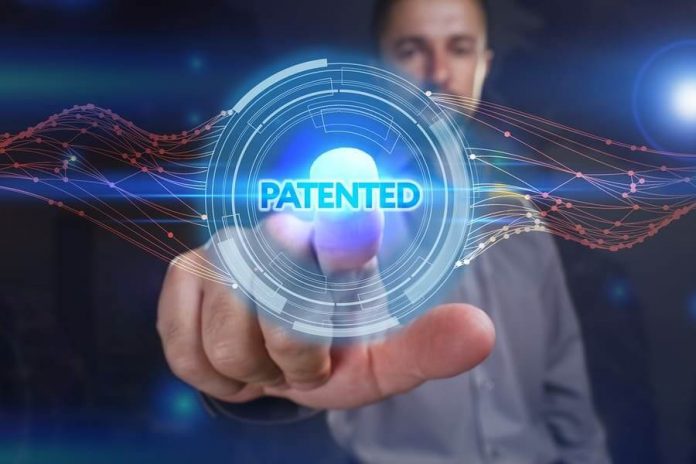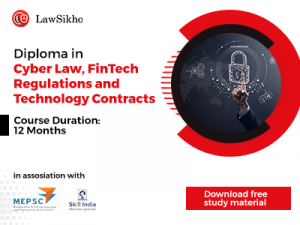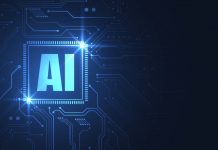This article is written by Rishabh Singh who is pursuing a Diploma in Cyber Law, FinTech Regulations, and Technology Contracts from LawSikho.
Table of Contents
Introduction
Computerized reasoning is the quickest spreading advanced framework in this day and age and is quickly turning out to be important for our lives. Man-made reasoning will upset how we work, study, and impart. Amalgamating Artificial Intelligence and the patent will ensure and empower human creations and exercises.
The irreplaceable part of licensed innovation is the sine qua non in the mechanical development of the country. It delivers difficulties to the ideas of licensed innovation rights to shield and secure quickly developing Artificial Intelligence creations in this well-informed climate.
AI systems are growing at an exceptional rate today, with more sophisticated forms of software being incorporated into them. This rise has created ripples in the traditional paradigm of patentability. Now with the help of AI, machines are generating creative and novel works autonomously. From being used as a mere tool for invention, the AI-driven machines are now creating inventions, leading to questioning of the status of human inventor in the patent system
Artificial Intelligence
It is difficult to give solid meaning to AI due to its different subjects and dynamic nature. The term AI includes a broad area that comprises reasoning and knowledge representation, robotics, natural language processing and machine learning.
It is truly hard to confine the substance of this term in a couple of words. Nonetheless, we will investigate different definitions which have characterized AI in a comprehensive manner so we could have an overall comprehension of the concept. The prior utilization of machines was limited to estimations and performing tasks dependent on pre-customized programming. However, for the previous few decades, the advancement in the field of AI has changed the job of PCs from just being a computing gadget to a critical thinking gadget that can get language, store data, and can gain from its encounters, very much like a human mind.
Knowledge is the computational piece of the capacity to accomplish objectives on the planet. We measure someone else’s insight by chatting with them, suggesting conversation starters to them, and noticing their reactions.
Man-made intelligence is the craft of making machines go about as though they are wise. It means that machines perform those tasks which require intelligence when performed by humans. Since the machines still need small voices, consequently the word ‘Counterfeit’ is connected with the knowledge to signify insight shown by a nonhuman element.
Patent
It is the privilege granted to an innovator to abuse his development subject to the patent laws for a while. The innovator is qualified to reject anybody from abusing his creation. The articulation licenses indicate a privilege conceded to any individual who imagines or finds another and helpful interaction, item, machines, articles, or any improvement in any current creation.
It is an option to avoid others from making, utilizing, bringing in, or selling licensed innovation. In order to get the invention patented it should be new or novel which means it should not form part of the existing state of the art, it should be non-obvious to the people who are expert in the field in which invention is made, and there should be an inventive step which involves technological advancement as compared to the existing technology.
Issues with Patentability of Artificial intelligence
Artificial Intelligence and Patent laws have expanded cooperation in this day and age. The present world is all innovation-based. The shrewd world we are all essential for. Disentanglement of tedious intricacy in systems and to diminish human exertion, AI has been blasting over the long haul.
The frameworks empowered with AI are so improved and forward that the undertakings performed by them are based on their own key learning’s. This makes opportunities for another creation to have a place with it. From an innovative stance, this is a colossal turn of events though there emerge a lot of difficulties with regards to the legitimate part of computerized reasoning.
Artificial intelligence consciousness innovation is growing quickly and is occurring in each industry everywhere in the world. In this day and age of globalization, numerous innovative arranged organizations are creating and are utilizing cutting-edge hardware. The rate at which Artificial Intelligence on the planet is developing and creating it is outperforming the legitimate parts of Artificial Intelligence and numerous escape clauses are taking birth in the assurance of Artificial Intelligence because of intricacy in lawful issues.
The issues like an encroachment of licensed innovation rights, impersonation, and misuse utilization of rights have made organizations secure their IPR in Artificial Intelligence on the off chance that it isn’t ensured it tends to be duplicated by some other individual.
The advancement wherein the organization has gone through millions and billions of cash will all go to no end and the organization needs to bear misfortunes. Because of the Complex nature of IPR, it is fundamental for a creator to be equipped with the correct devices to ensure Artificial Intelligence.
Patent workplaces themselves are hoping to incorporate Artificial Intelligence as a future for their licenses. As the volume of licenses and challenge of understanding common language, as well as patent language, keep on creating. Artificial brainpower will be significant in assisting with dealing with the issues and guarantee a sound future for the framework of the license.
The current situation of AI-equipped systems and technologies under intellectual property is slightly problematic, wherein the recognition of work that is created by the AI is a definite step towards the future, but actually and basically its implementation becomes an issue.
Implications of AI creations for a patent system
AI manifestations have made waves in the customary worldview of patentability. This new innovation has presented new difficulties to the patent framework which requires a short examination of specific issues which are pertinent from a patent viewpoint.
-
The inventorship of AI creations
The patent framework gives a restricted imposing business model over the development to the designer. The innovator is the proprietor of the patent rights and in the event that the designer isn’t revealed, a patent may be held unenforceable. The issue with imaginative AI is that if a machine is producing a free creation, can the machine be called a ‘designer’ and who will possess the privileges of the patent in AI creation.
Section 6(a) of the Indian Patent Act,970 allows patent application by any person claiming to be the true and first inventor of the invention. Similarly, under the 35 USC§100(f) US law inventor is defined as an individual who invented or discovered the subject matter of the invention. It can be safely said that the word ‘inventor’ is presumed to be a person or an individual.
In the case of Diamond v. Chakrabarty 447 U.S. (1980). which actually expanded the subject matter criteria for patents in the US, the court observed that “anything under the sun that is made by man is patentable”. The reason for such an approach was to make sure that invention remains under the control of that individual who has actually conceived it rather than in the hands of a legal entity like a company because people conceive not companies as held in the case of New Idea Farm Equip. Corp. v. Sperry Corp. 916 F.2d 1561,1566 (1990)
-
Ownership of Patent Rights in AI Creations
The machine is unequipped for holding the rights just on the grounds that it is not thought about as a legitimate element. Additionally, the AI machines by and by don’t have the ability to practice the rights self-sufficiently. Another contention against giving designer status to creative AI is that it would neglect to give any motivating force to the machine. The AI machines till now have not arrived at the degree of emoting, and in this way, the patent motivating force would be of no utilization to them. Rather than a machine, consequently the responsibility for rights
-
Liability Issue
Given the speed by which we are moving towards making self-administering AI that can be done in isolation, the issue of hazard in case of patent infringement by AI will plainly represent a test to the patent framework. As we have seen, imaginative AI needs just the least support by people and it delivers an exceptional item all alone.
There will be circumstances like these where the AI would make something that encroaches the privileges of a current patent holder Since human mediation is restricted to presenting the machine to previously existing information, an outcome which is self-rulingly being inferred by the AI machine by utilizing AI and different other rationale calculations are wild of the proprietor of the machine and consequently the following risk back to the proprietor would demonstrate truly troublesome.
The risk issue has certainly made one thing clear that for a genuinely self-governing AI, the customary standards may not get the job done to bring about legitimate responsibility for harm caused by an AI, since they would not make it possible to identify the party responsible for providing compensation.
Prior Art and Inventive AI
Prior art is a significant edge that a patent candidate needs to satisfy to ensure that his development is novel. An invention would be part of prior art if it was publicly known, used or was published to the public before the filing of the claimed invention as mentioned under section 64 (e) of the Indian Patent Act,1970 and a similar provision has been made under 35 USC§102(a).
Any archive which is in an open area and there is an unhindered community to it would go under the ambit of earlier craftsmanship A patent candidate is dared to be knowledgeable in earlier workmanship identified with their creation. For the purpose of determining non-obviousness also, the applicant is presumed to be aware of the entire pertinent prior art. In any case, the amount of data created by AI is immense which can’t be required to be perused by a person in the course of his life.
This issue is alleviated to some degree on the grounds that the candidate is needed to think just about that earlier craftsmanship that is connected to the field of his innovation. But even if we restrict the scope of the prior art, the information is so huge that it becomes really difficult to filter relevant information and go through each of such information
Innovation policy perspective on Patenting AI
Even if AI advances are probably going to fall inside the extent of patentable topic, is it alluring from a development strategy viewpoint to have a multiplication of such licenses? The continuous discourse on topic qualification seems, by all accounts, to be a lawful mask for a development strategy based on the worry of allowing programming and AI licenses.
Protected innovation rights are secured in the Empirical proof on the job of AI licenses in advancement for the two sides of the discussion. The accompanying areas centre around AI and programming development in general given that little research currently exists for AI-specific technologies.
Evidence for Negative Impact of Software/AI Patents on Innovation
A study by Ronald Mann found that software start-up firms do not engage in a “prior art” search of existing patents before beginning product development, suggesting that software patents do not directly promote downstream innovation.
Another study using data from over one thousand AI start-ups found that only twenty-one per cent of AI start-ups applied for a patent, with just eleven per cent being granted at least one patent. The larger and more established technology companies are dominating the software and AI patent landscape, but not necessarily for the purpose of promoting innovation.
Evidence for the Positive Impact of Software/AI Patents on Innovation
When it comes to measuring innovation through software start-up financing and long-term success, a study by Mann found that obtaining patents was positively correlated with the number of successful venture capital financing rounds, total investment amount, and longevity of the company.
The 2008 Berkeley Patent Survey found that while only one-third of software entrepreneurs filed for patents, the majority of venture-backed software start-ups had obtained patents.
Admittedly, these findings are correlational and it is not clear whether patents themselves contribute to the success or whether it is merely the expectation of investors for start-ups to obtain patents.
Another important factor in understanding the effect of licenses on downstream development is the full lifecycle of a patent which incorporates its case history and its deal and authorizing history.
While a case can be viewed as a net negative for advancement given its high conditional expense, deal and permitting exercises can be viewed as a net positive since they address the exchange and scattering of information.
Conclusion and suggestions
Patent law is novel as it is a gathering point of science and law. It presents an agreeable connection between science and law. Notwithstanding, the patent framework right now is encountering developing agonies in this time of AI. The speed at which the innovation is propelling, it gets basic for patent framework all through the globe for a relook at the customary standards of the patent framework.
Simulated intelligence-created innovations will turn out to be increasingly more noticeable in the coming future prompting the ascent of more confounded issues for the patent framework. There is a prerequisite for a coordinated exertion worldwide to manage such issues presented by AI and to prepare global instruments like the TRIPS to accommodate a typical rule for managing the issue of creative AI.
It is significant that the patent framework should be satisfactorily furnished to manage future mechanical progressions like AI so the interest of the general public and the inspiration for development for individual remaining parts is adjusted. This requires a powerful methodology in law to oblige changes important to add the interest of the general public.
A portion of the issues talked about can be settled under the present patent framework yet that doesn’t imply that the future issues could likewise be settled inside the current patent framework. The patent framework including the legal setup is likewise should be assessed with adequate information and assets to manage AI-created innovations and how they ought to be treated under the patent framework.
References
- Cortica, Numenta Hold Top Patents in Artificial Intelligence, CB INSIGHTS RES. (Apr. 27, 2017) https://perma.cc/B6VY-JRB5
- V k Ahuja, Law relating to intellectual property right (Second edition, 2016)
- 9 Raymond Kurzweil,What is AI Anyway?73 AMERICAN SCIENTIST 258,262 (1985).
- Custom accessories vs Jeffrey Allen industries F.2d. 955,962 (1986).
- Ben Hatten Bach & Joshua Glucoft, Patents In An Era Of Infinite Monkeys and Artificial Intelligence, 19 STAN. TECH. L. REV. 32, 40 (2015).
Students of Lawsikho courses regularly produce writing assignments and work on practical exercises as a part of their coursework and develop themselves in real-life practical skills.
LawSikho has created a telegram group for exchanging legal knowledge, referrals, and various opportunities. You can click on this link and join:
 Serato DJ Crack 2025Serato DJ PRO Crack
Serato DJ Crack 2025Serato DJ PRO Crack











 Allow notifications
Allow notifications


